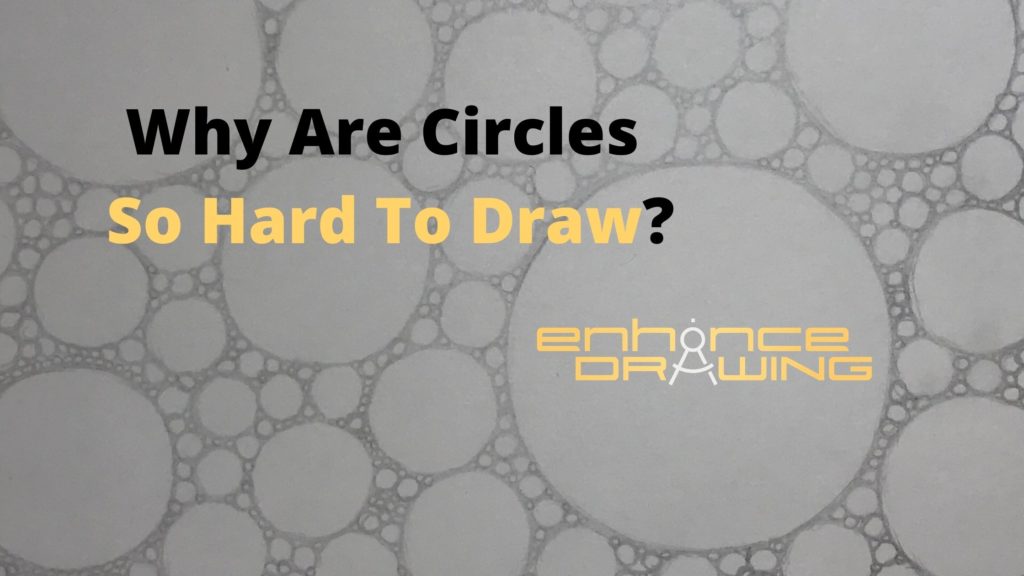
It is incredible that a circle, a figure we know so well, is so hard to draw. And the worst about it is that it makes us think that we can’t get better at drawing if we can’t even draw circles. So how come circles are so hard to draw?
Circles are hard to draw because our brains cannot process all the required actions to do it simultaneously without experience. The difficulty of drawing circles comes from the unceasing movement corrections an artist needs to do every millisecond, which involves many joints and muscles.
But we still need to draw circles for our drawings, so what are some solutions for drawing circles as accurately as possible? Here are five reasons that make it hard and a solution for each of them!
Reasons Why Drawing Circles Is So Hard
There are plenty of reasons why drawing circles freehand is practically impossible for humans. In fact, we humans tend to draw circles so inaccurately that there are numerous scientific studies about it. Like these two: Biomechanical constraints on horizontal arm movements and The role of vision, speed, and attention in overcoming directional biases during arm movements
But let’s look at the most common reasons people draw circles wrong and how to solve each of them.
1. There Are No Visual References When Drawing Circles
Unless you have drawn something around where the circle will be, there are no references to draw it. The only line references you will have to what the curvature should look like are the lines you’re drawing at that moment. However, the only moment you can make use of those references is when you’re halfway through drawing the circle, sometimes even further, and that’s most of the time too late to correct mistakes. So what can we do about this problem?
Solution
If you don’t have references, draw them. I find squares the most useful and easiest to draw when making references for a circle. You can also use Xs and triangles as references. The exercise consists of drawing a square, X, or triangle and then draw a circle inside the figure. For the X, it would be around it. Here’s an example of how to do it.
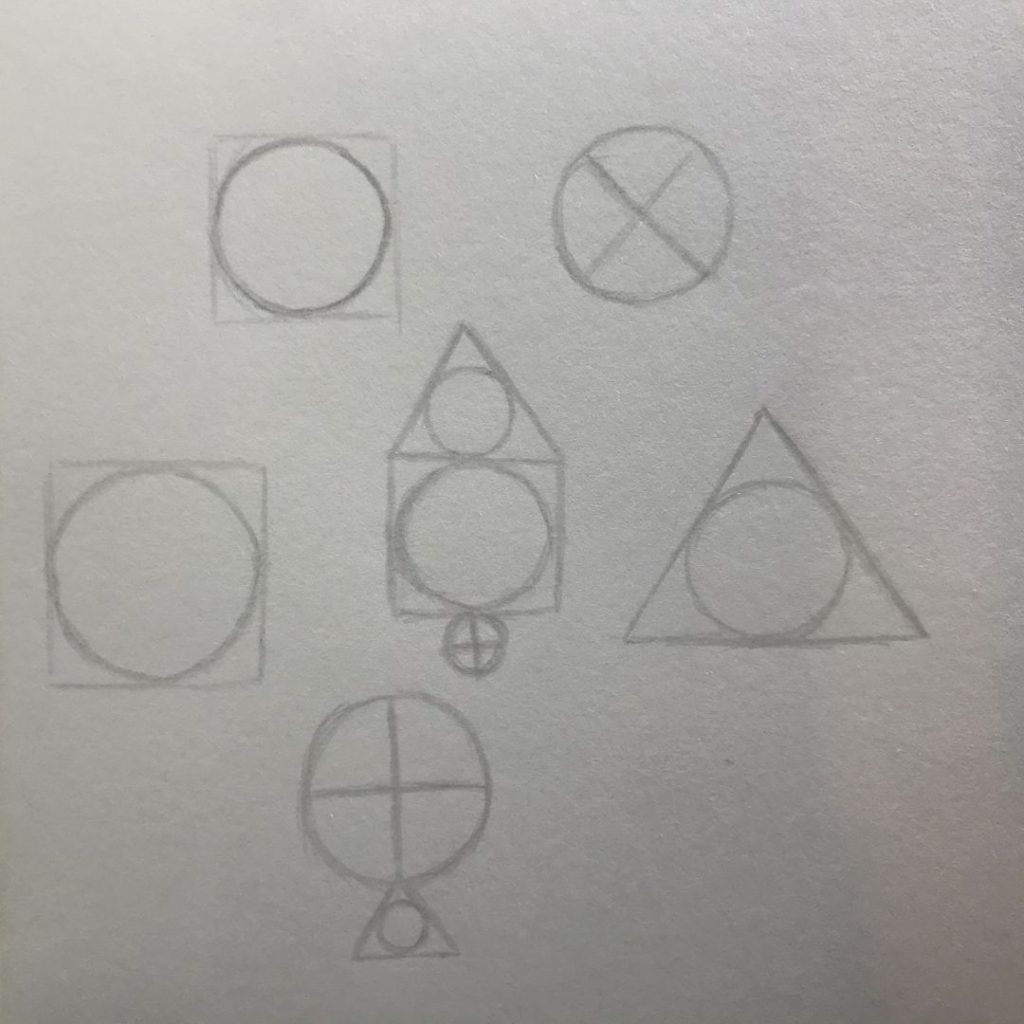
2. You’re Drawing Circles In A Single Stroke
Many beginner artists tend to commit to every line they stroke, but it is better to do that when you have more experience drawing. When you commit to a line, and it doesn’t go as expected, there’s no coming back, and you have to start over again. I’ve seen that most people saying they can’t draw circles do this, but the way to fix this is not complicated, and it will drastically improve your overall drawing if you didn’t yet apply it.
Solution
Stop drawing circles in a single stroke. Instead, use as many strokes as you need while drawing the circle; this will allow you to find the right curvature and correct mistakes along the way. You’ve probably seen some drawing artists doing this: it’s called sketching. See the picture below to understand how to put this exercise into practice.
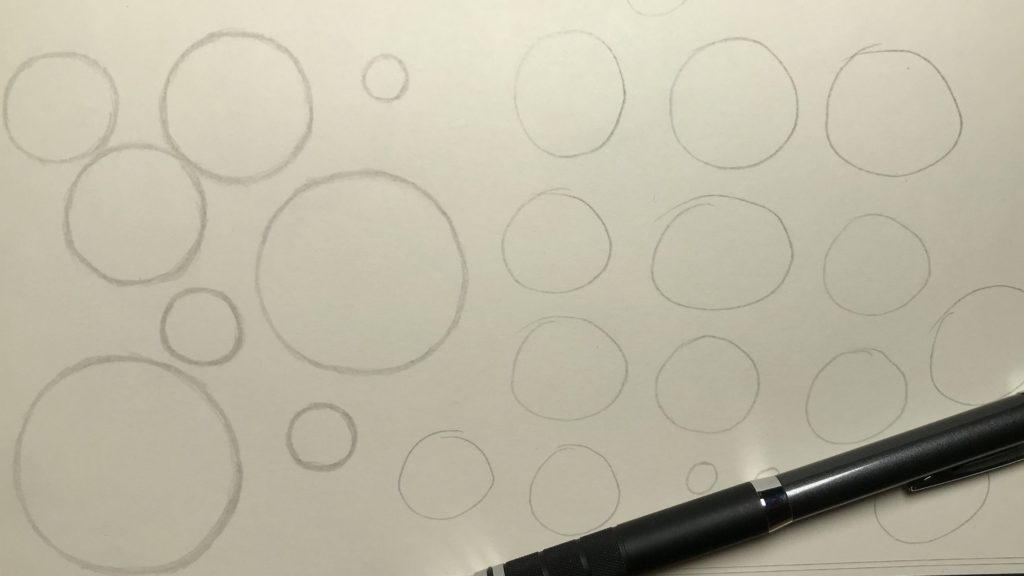
3. You Don’t Have Enough Experience Drawing Circles
Drawing is a skill, and as with any skill, you need time to learn it. I could wonder why calculus is so hard, and some people may say it is not actually that hard; it is just that you haven’t learned how to do it. So coming back to drawing, if you’re already applying the tips in exercises number 1 and 2 and still you cannot resemble a circle accurately, this might be the problem.
Solution
You need more experience, and you need to draw more circles. Cliché, but always true. Since drawing circles over and over can be somewhat boring, there is a great exercise that makes it more fun. The idea is to start by drawing large circles at random on a sheet of paper, then draw smaller circles to fill in the gaps, and then draw even smaller circles to fill in the remaining spaces until the entire sheet is filled with circles of all sizes. What’s amazing about this exercise is that every time you do it, it is always unique.
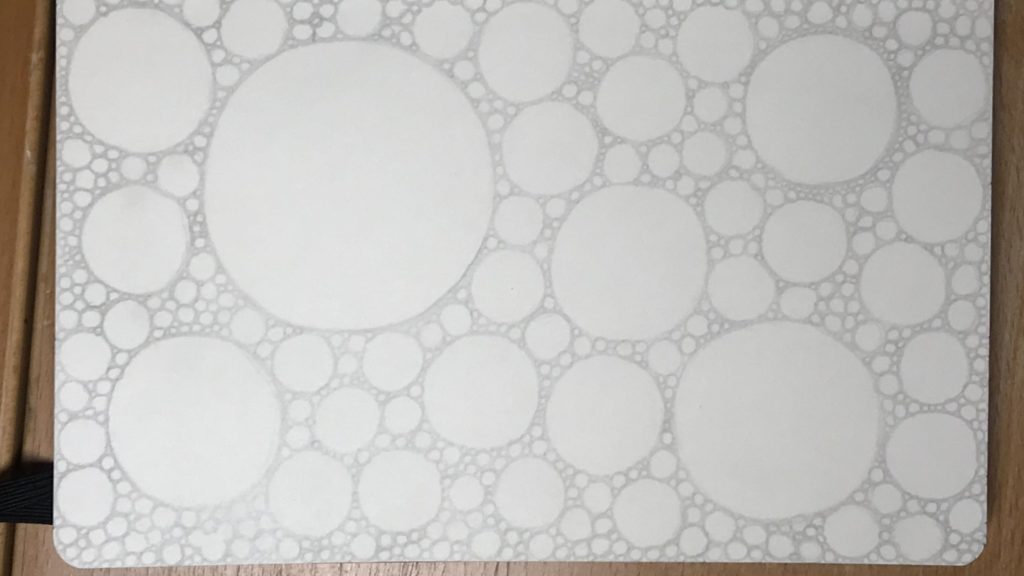
FIND THE MICKEY MOUSE!
4- You’re Not Creating A Proper Mental Image Of The Circle
So what else can we be doing wrong when drawing a circle? The next most common reason is that we focus so much on the little details that we miss the bigger picture. We start to draw the circle, and we haven’t even decided where to finish it, which complicates the problem. Draw with passion, but never without purpose.
Solution
We need to use our brain’s imaginary powers, the same ones we use to see ourselves drawing like Michelangelo, and rather use them to picture the circle we will draw on paper before sketching it. Imagine the circle’s size, how it will look like when finished, and draw it in your head—constructing a mental image of the drawing before illustrating it is very powerful. For this exercise, sketching or single strokes are valid. You can use the image in exercise number 2 as an example of how to practice it.
5- Our Brains Can’t Accurately Draw Perfect Circles
Last but not least, that’s a reality. Our brains can’t draw perfect circles, nor can anything in the physical world draw a perfect circle. (But we will discuss that further after finishing this question; it is very interesting.) However, for drawing, we don’t need a perfect circle; we just need something that resembles a circle, and there are ways to illustrate them very accurately. Sometimes, you have to draw circles on a bigger scale, and the methods we mentioned earlier may not be as effective or appropriate. So what can we do about it?
Solution
If you don’t want to draw reference lines or sketch a circle, you can use drawing tools like the one in my logo: a compass. It is not going to make a perfect circle, but it will be much more than enough. These are some of the circles I drew using a compass.
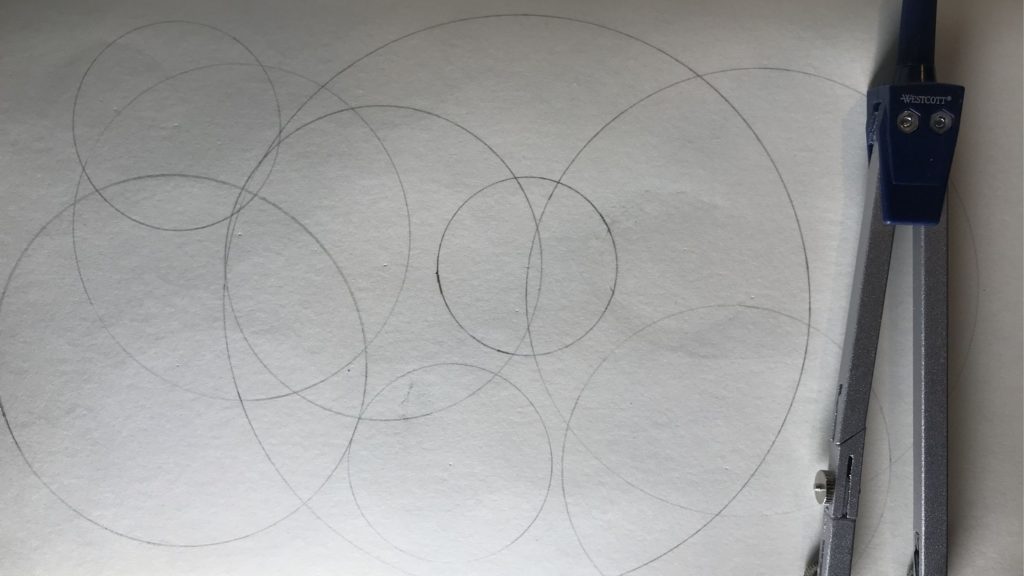
Is It Possible To Draw A Perfect Circle By Hand?
Catching over what we left in reason number 5, I said that there’s nothing in the world that can draw a perfect circle in the physical world. Maybe machines can get to draw them very close to perfection if they do it digitally, but can humans draw a perfect circle freehand?
Drawing a perfect circle by hand is impossible. The human brain doesn’t have the precision or resources to draw an ever curving circle by hand. Until someone discovers the exact value of π, perfect circles will remain a mathematical concept only possible as an idea.
That’s deep. And there’s more about it: a mathematical circle doesn’t have either height or width, so how could such a thing exist in the real world? The closest humans have gotten to make a perfect sphere was off by three atoms. THREE ATOMS. Not even Leonardo da Vinci would have been able to draw a perfect circle.
But don’t worry about it, who needs to draw a perfect circle anyways? Art is beautiful because it isn’t perfect.
How Good Can You Get At Drawing Circles?
That’s a different story. You may not be able to draw a perfect circle, but you can surely get really good at drawing circles by hand. Of course, you would have to draw many of them and practice a lot. The exercises we saw above are a perfect way to start mastering the technique of drawing circles. Since circles are such common shapes on almost every drawing we make, you will also notice an overall improvement in many other drawing aspects if you get better at drawing them. Especially at hand to eye coordination.
There’s a viral video of the World Freehand Circle Drawing Championship winner, showing the unbelievable technique this guy has drawing circles. You can see the video below:
It never stops to amuse me every time I see it. It’s also funny because I once read something about drawing perfect circles would mean you’re a psychopath. If that were to be true, this guy is the craziest person alive! (Of course, he’s not).
